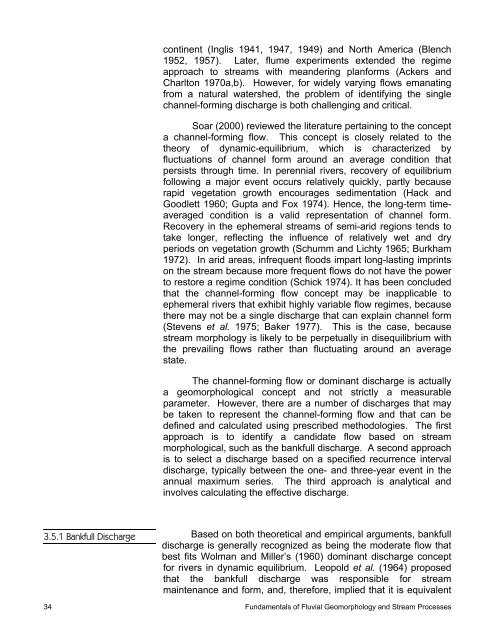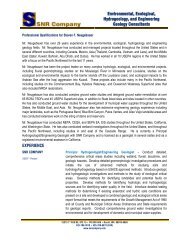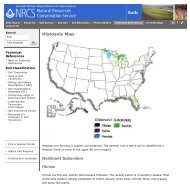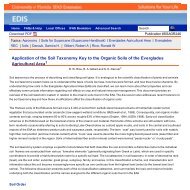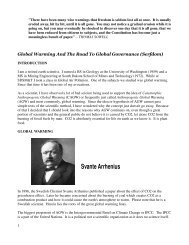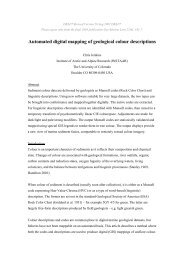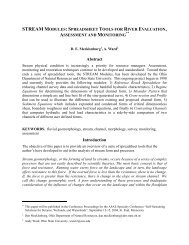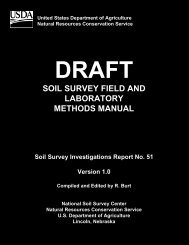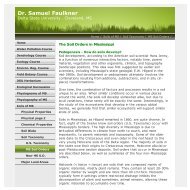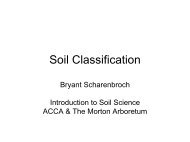chapter 3 fundamentals of fluvial geomorphology and stream ...
chapter 3 fundamentals of fluvial geomorphology and stream ...
chapter 3 fundamentals of fluvial geomorphology and stream ...
You also want an ePaper? Increase the reach of your titles
YUMPU automatically turns print PDFs into web optimized ePapers that Google loves.
continent (Inglis 1941, 1947, 1949) <strong>and</strong> North America (Blench1952, 1957). Later, flume experiments extended the regimeapproach to <strong>stream</strong>s with me<strong>and</strong>ering planforms (Ackers <strong>and</strong>Charlton 1970a,b). However, for widely varying flows emanatingfrom a natural watershed, the problem <strong>of</strong> identifying the singlechannel-forming discharge is both challenging <strong>and</strong> critical.Soar (2000) reviewed the literature pertaining to the concepta channel-forming flow. This concept is closely related to thetheory <strong>of</strong> dynamic-equilibrium, which is characterized byfluctuations <strong>of</strong> channel form around an average condition thatpersists through time. In perennial rivers, recovery <strong>of</strong> equilibriumfollowing a major event occurs relatively quickly, partly becauserapid vegetation growth encourages sedimentation (Hack <strong>and</strong>Goodlett 1960; Gupta <strong>and</strong> Fox 1974). Hence, the long-term timeaveragedcondition is a valid representation <strong>of</strong> channel form.Recovery in the ephemeral <strong>stream</strong>s <strong>of</strong> semi-arid regions tends totake longer, reflecting the influence <strong>of</strong> relatively wet <strong>and</strong> dryperiods on vegetation growth (Schumm <strong>and</strong> Lichty 1965; Burkham1972). In arid areas, infrequent floods impart long-lasting imprintson the <strong>stream</strong> because more frequent flows do not have the powerto restore a regime condition (Schick 1974). It has been concludedthat the channel-forming flow concept may be inapplicable toephemeral rivers that exhibit highly variable flow regimes, becausethere may not be a single discharge that can explain channel form(Stevens et al. 1975; Baker 1977). This is the case, because<strong>stream</strong> morphology is likely to be perpetually in disequilibrium withthe prevailing flows rather than fluctuating around an averagestate.The channel-forming flow or dominant discharge is actuallya geomorphological concept <strong>and</strong> not strictly a measurableparameter. However, there are a number <strong>of</strong> discharges that maybe taken to represent the channel-forming flow <strong>and</strong> that can bedefined <strong>and</strong> calculated using prescribed methodologies. The firstapproach is to identify a c<strong>and</strong>idate flow based on <strong>stream</strong>morphological, such as the bankfull discharge. A second approachis to select a discharge based on a specified recurrence intervaldischarge, typically between the one- <strong>and</strong> three-year event in theannual maximum series. The third approach is analytical <strong>and</strong>involves calculating the effective discharge.3.5.1 Bankfull DischargeBased on both theoretical <strong>and</strong> empirical arguments, bankfulldischarge is generally recognized as being the moderate flow thatbest fits Wolman <strong>and</strong> Miller’s (1960) dominant discharge conceptfor rivers in dynamic equilibrium. Leopold et al. (1964) proposedthat the bankfull discharge was responsible for <strong>stream</strong>maintenance <strong>and</strong> form, <strong>and</strong>, therefore, implied that it is equivalent34 Fundamentals <strong>of</strong> Fluvial Geomorphology <strong>and</strong> Stream Processes


